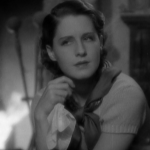 |
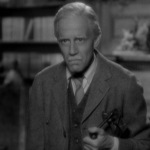 |
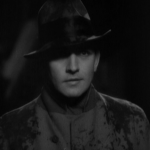 |
| Kathleen / Moonyeen Norma Shearer |
Sir John Carteret Leslie Howard |
Kenneth / Jeremy Frederic March |
| Released by MGM | Directed By Sidney Franklin |
||
Proof That It’s Pre-Code
- “Don’t you want me? I want you. And I’m not ashamed to say it.”
- An injury to one of the characters later in the movie means quite a bit for a couple’s intimacy in the future, but it’s not a big deal.
Smilin’ Through: Sweet Nothing
“I get a great deal of comfort from conjuring up ghosts.”
Smilin’ Through is a glossy example of pre-Code MGM gloss at its glossiest. There’s so much spit, polish and shine that it’s forgivable for many to overlook the fact that there’s not much more to it than that.
In the late 19th century in a small area of a the English countryside, young Sir John Carteret (Leslie Howard) is deeply in love with a vivacious lady named Moonyeen (Norma Shearer in blonde hair, and, no, the name is never explained). Tragedy strikes on their wedding day when a drunk, jealous ex-lover, Jeremy (Frederic March with a mustache) tries to kill John but ends up mortally wounding Moonyeen instead.
John grows into a bitter shell of a man, and Kenneth escapes. John’s only relief comes several years later when his friend Owen (O.P. Heggie) brings him Moonyeen’s dead sister’s daughter to live with him, and John raises the girl up to be the apple of his eye. Its the mid-1910s now, and Kathleen (Norma Shearer with dark hair) grows up into a vivacious young lady, deeply loyal to her adopted ‘Uncle’ John, at least until the handsome Kenneth (Frederic March without a mustache) sweeps into her life.
Kenneth is Jeremy’s son, and John becomes aghast at this, angrily demanding the lovers be kept apart. Worse, when Kenneth arrived, he was waiting for his turn to join the British on the front lines of the first World War. When John threatens to cut off Kathleen while Kenneth is at war, Kenneth feels he has no choice but to not marry the girl. Will he make it back alive, and will John ever get over his decades-long pain?
The film is very effective at a number of things. Its mix of pastoral setting with ghostly atmosphere– Moonyeen makes several appearances as a specter– as well as the intergenerational tale of loves lost and found give the film a very gentle edge. It helps that the actors involved in most of the proceedings know how to play light dramatic romance perfectly, with Howard and March both working great as sensitive, shaken men who are rich with desire and plagued with regrets.
Shearer is given less to do as both the ghostly Moonyeen and the playful Kathleen. She’s called upon to portray innocence, hope, and the yearning that underlies a painstaking wait, but her best moments are when she’s allowed to poke through the film’s dusty veneer and express some unbridled sexual yearning– as is Shearer’s fashion.
The movie is based on a stage play produced shortly after the first World War, and there are echoes of the conflict throughout the movie. One of the most memorable touches is how, in moments of silence, characters will notice the windows shaking from the shelling going on in France, hundreds of miles away. These windows provide an ominous threat throughout the movie, not just of the short time Kathleen and Kenneth have together before he must shove off, but the ghost of death and finality that hangs over all young lovers.
Smilin’ Through has plenty for people to like, from the performances to the airy, mythical charm, but there’s not anything to it besides that. What’s the point of the story? Love survives the ages? Bitterness can poison love? When the characters talk, all they discuss is platitudes of how much they love each other. Even the war seems glossed over, with the only real moment of tragedy is when Kathleen’s old boyfriend, Willie (Ralph Forbes), is crushed because she’s obviously not looking for him at a train station full of returning soldiers.
The rest of the drama is waylaid for an uninspiring happy ending, where lovers are united for who knows what future. The Gothic trappings of the film’s war-torn and revenge-encrusted fantasies are laid to rest with simple platitudes. While Similin’ Through may be a sweet, playful love letter to the mystical powers of lost loves, it just didn’t pull together for me. It’s a lavish nothing.
Gallery
Hover over for controls.
Trivia & Links
- Based on a play from 1919. Originally filmed in 1922 with Norma Talmadge and later remade in 1941 by Frank Borzage with Jeanette MacDonald. You can read about the former at Silent Era and the latter at Movie Morlocks.
- Great still and several radio adaptations over at Doctor Macro.
- I’m very much the minority on this film in terms of my feelings. Besides my wife, who ‘oooh’d and ‘awww’d her way through it, you also have great writers like Raquel over at Out of the Past going to bat for it:
This film feels very ethereal with Moonyean’s ghost, the soft focus of the camera, the soft English countryside and the almost vacant town. There is an emptiness in the surroundings and this void is filled with heightened states of emotion. The slow, leisurely pace of life contrasts with the bombings of the war going on just some miles away. What I love about Victorian/Edwardian stories like this is that all emotions and reactions are so grandly exaggerated. The characters have so much time on their hands that they are left with their own thoughts and lot of time for thinking and brooding can make the heart heavy. This film is romantic and theatrical and the cast is simply wonderful. It’s a veritable treat and I hope you all get a chance to see it, because it would be an utter shame if you didn’t.
- The TCMDB article is pretty short, but does explain one aspect of filming:
Cameraman Lee Garmes would recall that working with Shearer created unusual problems because she had a cast in one eye and feared being photographed in a manner that would make her look “cross-eyed.” The tactful Garmes would find some other excuse if he was forced to interrupt a scene for this reason: “I’d stop the camera and say, loudly, something like, ‘A light went out.’ And I’d fiddle around a bit until she’d blink a signal at me and she could finish the shot.”
- IMDB’s trivia section notes:
Fredric March commented to his first cousin, Kathryn Davis, about working with Norma Shearer, that, yes, she was a great actress, professional, etc., but could be difficult, because she constantly expected perfection. When Davis asked what that specifically meant, March replied, “She was never satisfied, kept having us do take after take.” Pausing, he continued, unabashed, “Especially our love scenes. She always wanted to redo all the love scenes, several times!” Davis wanted to ask why he supposed Shearer always wanted to retake the love scenes in particular, but thought better of it and kept silent.
Awards, Accolades & Availability
- This film is available on Amazon and Warner Archive.
Comment below or join our email subscription list on the sidebar! |
||
 |
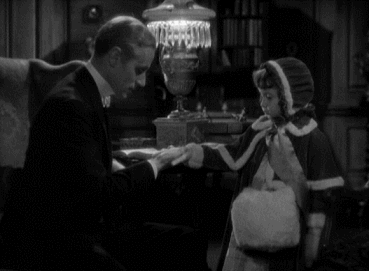 |
 |
 |
 |
|

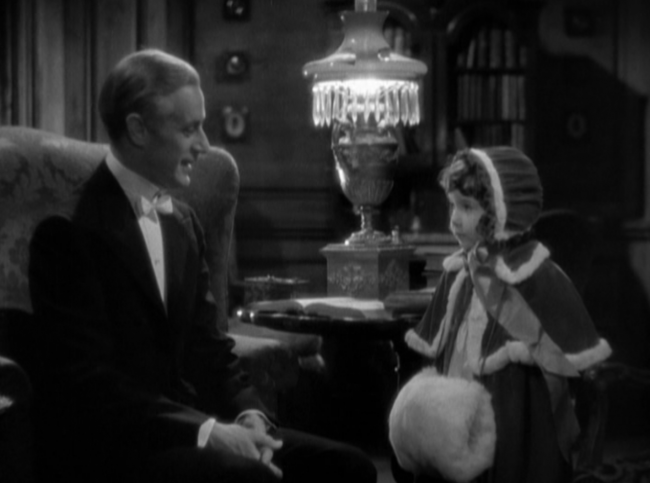
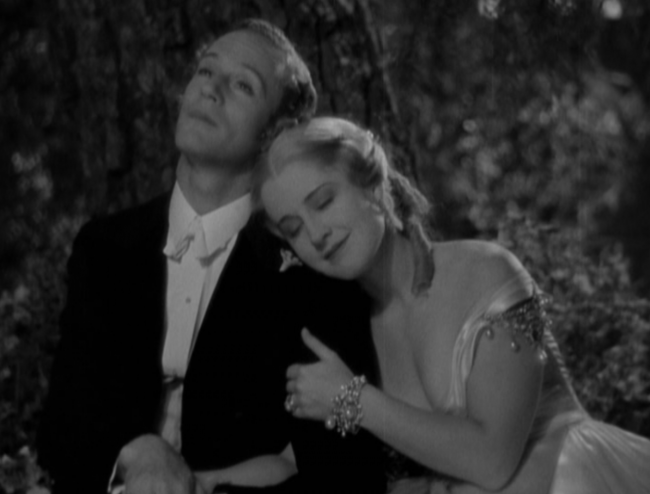
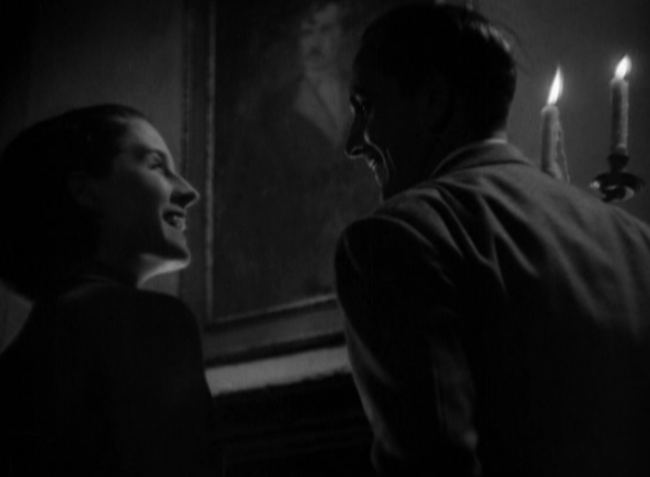



6 Comments
nitrateglow · April 10, 2015 at 9:46 am
The film is airy and light, with little substance, but I figure it’s more like cinematic cotton candy than a lavish nothing and I do get emotional in the final scenes, I’ll admit. Not a great film fit to rank among “the greatest love stories ever,” but I do enjoy watching it if I happen to come across it. Still, I would really like to see the silent version with Norma Talmadge, if only because that was her definitive role at the time and I haven’t been especially impressed with what I have seen of her. She’s like DIsney’s Frozen for me: Talmadge is not awful by any means, but I have no idea why she was so popular.
Danny · April 14, 2015 at 9:17 am
It’s well made, but really not my cup of tea. And I’ll shamefully admit I don’t think I’ve seen anything with Talmadge in it, so at least you’re that far ahead of me.
Ben Frey · April 10, 2015 at 11:53 am
You mention something (quote, actually) in the links section: “…because she had a cast in one eye and feared being photographed in a manner that would make her look ‘cross-eyed’.” I’ve noticed this about Shearer for years but haven’t done research to find out more. So, what does that mean – ‘a cast in one eye’? From certain angles, I can see the one eye slightly askew. Is it an affliction (minor, to be sure) or just an illusion? Diana Wynyard (a definite Shearer “separated at birth” candidate) also seemed to have a similar look.
Danny · April 14, 2015 at 9:21 am
It just means that she’s got a bit of a lazy eye. It took Shearer years of training so that it isn’t very noticeable, though many Shearer detractors latch onto its extremely rare appearance on film. I think it’s one of the things I like most about Norma: she became a star out of pure determination and made the most out of it. Haters be damned.
Dulcy · April 14, 2015 at 12:01 am
Has anyone done the math on this story?? The little girl who enters John’s life at age 5 must have been born very late in her parents’ marriage, or her mother was born very late in her parents’ marriage. This has always bothered me, but it hasn’t kept me from enjoying the movie, many times. Except for that opening scene of John “moonyeen-ing” in the garden and that housekeeper’s award-worthy performance (cough, cough)….. Moonyeen, the name, means “little darling”, or so I’ve heard. I also heard that March was pleasantly surprised to find that Shearer was actually a good actress. ( A lot of the fluttering hand movements in her performances was to direct attention away from her wandering left eye; Diana Wynyard is just plain cross-eyed!)
Danny · April 14, 2015 at 9:25 am
The little girl was the daughter of Moonyeen’s sister’s marriage, so I just assumed there was a good distance in ages between the two. (Like six or seven years maybe?) Shearer’s gesturing was toned down throughout her films, but I never minded it too much.
Comments are closed.